
Croatia facts and history in brief
Rijeka
Excerpted from Wikipedia, the free encyclopedia.
Rijeka (Fiume in Italian and Hungarian, Reka in Slovene;
R(ij)eka and Fiume both mean river) is the principal
seaport of Croatia, located on the Kvarner Bay, an
inlet of the Adriatic Sea.
It has 144,043 inhabitants (2001) and it is
the third largest city of Croatia.
Rijeka is the center of the Primorje-Gorski Kotar county.
The city's economy largely depends on sea transport,
shipbuilding (shipyards "3. Maj"
and "Viktor Lenac") and tourism.
Rijeka hosts the Croatian National Theatre "Ivan
pl. Zajc", first built in 1765, as well as the
University of Rijeka, founded in 1632.
The local football (soccer) club is called NK Rijeka.
History
Though traces of Neolithic settlements can be found
in the region, the earliest settlements on the site
were Celtic Tarsatica (modern Trsat, now part of Rijeka)
on a hill and the Illyrian tribe of mariners, the Liburni
in the natural harbour below.
The city long retained this double character.
In the time of Augustus, the Romans refounded
Tarsatica as a municipium (MacMullen 2000) on
the right bank of the Rijecina, (whose name
simply means "river") as Flumen. Pliny mentioned
Tarsatica (Natural History iii.140).
After the 4th century the city was rededicated
as Flumen Sancti Viti, the city's patron saint.
From the 5th century onwards, the town came under successive
Frankish, Croatian and Magyar rule before coming under
the control of the Austrian Habsburgs in 1466.
Created a free port in 1723, Fiume was passed
during the 18th and 19th centuries among the
Habsburgs' Austrian, Croatian, and Hungarian
possessions until its attachment to the latter
kingdom for the third and last time in 1870.
Although Croatia had a constitutional autonomy
within Hungary, the City of Fiume was independent,
governed directly from Budapest by an appointed
governor, as Hungary's only international port.
There was competition between Austria's Port
of Trieste and Hungary's Port of Fiume.
Major port development, the general expansion
of international trade and the city's connection
(1873) to the Hungarian and Austrian railway
networks contributed to rapid population
growth from 21,000 in 1880 to 50,000 in 1910.
A lot of major building of the city was built
at that time, including the Governor's Palace
by the Hungarian architect Alajos Hauszmann.
The future mayor of New York City, Fiorello
La Guardia, lived in the city at the turn of
the 20th century, and reportedly even played
football for the local sports club.
Habsburg-ruled Austria-Hungary's defeat and
disintegration in the closing weeks of World
War I led to the establishment of rival Italian
and Croatian administrations in the city as
both Italy and the founders of the new Kingdom
of the Serbs, Croats and Slovenes (later Yugoslavia)
claimed sovereignty based on their
"irredentist" ("unredeemed") ethnic populations.
After a brief Italian occupation, an international
force of French, British and United States troops
occupied the city (November 1918) while its future
was discussed at the Paris Peace
Conference during the course of 1919.
Italy based her claim on the fact that Italians
were the largest single nationality within the city.
Croats made up most of the remainder, and were
also a majority in the surrounding area, including
the neighbouring town of Susak.
Negotiations were rudely interrupted by the city's
seizure on September 12, 1919 by a force of Italian
nationalist irregulars led by the writer Gabriele
d'Annunzio, who established a state
(the "Italian Regency of Carnaro").
This happened just two days after the Treaty
of Saint-Germain was signed that declared the
Austro-Hungarian Monarchy dissolved.
The resumption of Italy's premiership by the
Liberal Giovanni Giolitti in June 1920 signalled
a hardening of official
attitudes to d'Annunzio's coup.
On November 12, Italy and Yugoslavia concluded the
Treaty of Rapallo, under which Fiume was to be an
independent state under a regime acceptable to both.
D'Annunzio's response was characteristically
flamboyant and of doubtful judgment: his declaration
of war against Italy invited the bombardment by
Italian royal forces which led to his surrender
of the city at the end of the year.
Italian troops took over in January 1921.
The election of an autonomist-led constituent assembly
for the territory did not put an end to strife: a brief
Italian nationalist seizure of power was ended by the
intervention of an Italian royal commissioner, and a
short-lived local Fascist take-over in March 1922 ended
in a third Italian military occupation.
Seven months later Italy herself
fell under Fascist rule.
A period of diplomatic acrimony closed with the
Treaty of Rome (January 27, 1924), which assigned
Fiume to Italy and Susak to Yugoslavia,
with joint port administration.
Formal Italian annexation (March 16, 1924)
inaugurated twenty years of Fascist rule and a
policy of forced Italianisation of the Croatian
population, followed by twenty months
of German military occupation.
The aftermath of World War II saw the city's
fate again resolved by a combination
of force and diplomacy.
This time, Yugoslav troops advanced (early May 1945)
as far west as Trieste in their campaign against the
German occupiers of both countries: Fiume finally
became the Croatian (and until June 1991, Yugoslav)
city of Rijeka, a situation formalised by the Paris
peace treaty between Italy and the
wartime Allies on February 10, 1947.
Once the change in sovereignty was formalised, most
of the Italian-speaking minority fled the Tito's communist
regime and went into exile (Esuli).
The discrimination most of them experienced and
the persecution many of them suffered at the
hands of the new Yugoslav authorities in the
dying days of World War Two and the first weeks
of peace were a painful memory for them. Summary
executions of hundreds of suspected 'Fascists',
Italian public servants, military and ordinary
citizens pushed Fiume's Italians
to abandon their ancestral home.
External links

The above details were retrieved and condensed
from
(http://en.wikipedia.org/wiki/Rijeka)
August 2005
All text is available under the terms of the
GNU Free Documentation License (see
Copyrights for details).

Hui Chin and I visited Croatia during our European
travels in 2005.
We have enjoyed our stay in the country, but were very
disappointed with the train services.
Before our departure from new Zealand, we purchased
a rather expensive Regional Eurail Pass with added days
to cover any delays or staying longer in any place than
we have planned for.
Croatia, - at least between places we intended to visit
- have very poor train services.
We arrived from Austria, through Slovenia to Rijeka,
and although Rijeka connected by rail to Pula, our next
stop, the train service is very slow and sporadic.
To go from Pula to Zadar or Split, or Dubrovnik, we
either had to go through Zagreb with the consequent
delay or use the bus services, which we did have to
use throughout.
The roads are very good, so are the bus services, but
it meant extra expenses for us, with already paid for
rail passes.
With the good roads Croatia is catering for the neighbouring
countries drivers, not for the like of us, with limited
budgets, who can't afford a car or hired car in every
country we like to visit.

Hui Chin and I were felt
lost a bit at our arrival to Rijeka late in the afternoon,
until the young man we were talking with on the train
told us that his father would like to drive us to the
hotel they were recommending us. There were only 3 or
4 hotels in Rijeka we were told and one was closed down.
Nice town.
Friendly people.

You can click on these photos for an enlargement.
2005
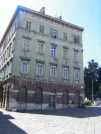 |
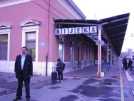 |
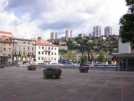 |
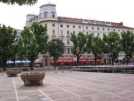 |
| Rijeka |
Rijeka |
Rijeka |
Rijeka |
 |
 |
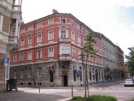 |
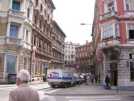 |
| Rijeka |
Rijeka |
Rijeka |
Rijeka |
 |
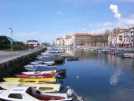 |
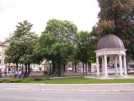 |
 |
| Rijeka |
Rijeka |
Rijeka |
Rijeka |
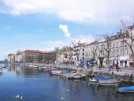 |
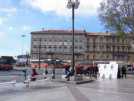 |
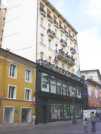 |
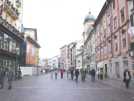 |
| Rijeka |
Rijeka |
Rijeka |
Rijeka |
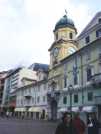 |
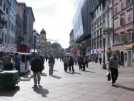 |
 |
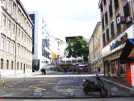 |
| Rijeka |
Rijeka |
Rijeka |
Rijeka |
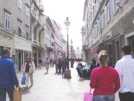 |
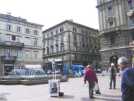 |
 |
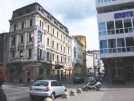 |
| Rijeka |
Rijeka |
Rijeka |
Rijeka |
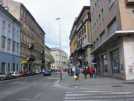 |
 |
 |
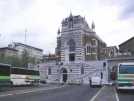 |
| Rijeka |
Rijeka |
Rijeka |
Rijeka |

Site
Index
Back to Top
Photos Index
Thanks for coming, I hope you
have enjoyed it, will recommend
it to your friends, and will come
back later to see my site developing
and expanding.
I'm trying to make my pages
enjoyable and trouble free for everyone,
please let me know of any mistakes
or trouble with links, so I can
fix any problem as soon as possible.
These pages are best viewed with monitor
resolution set at 640x480 and kept simple
on purpose so everyone can enjoy them
across all media and platforms.
Thank you.
You can e-mail me at
Webmaster

|